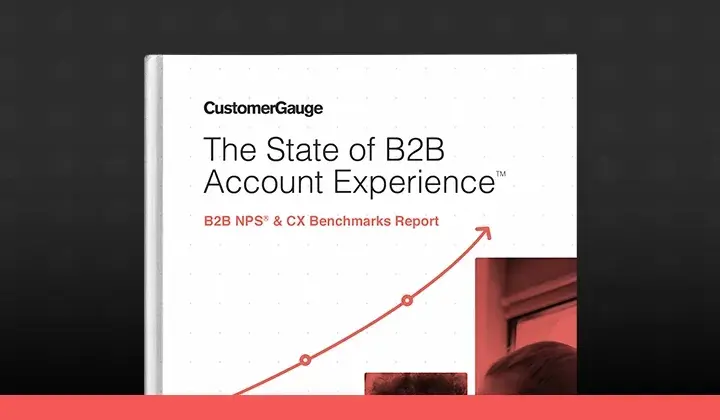In B2B losing a customer isn’t necessarily the end of the road. In fact many lost customers are very open to re-establishing old relationships, with a 20-40% success rate of reselling to old customers as opposed to the 5-20% likelihood of new customers. Old customers know your product and services, and as such many of those typical sales related barriers are removed.
So what needs to be done to get back those old customers?
Not all previous customers need to be customers again
Define which previous customers can or should be won back. Not all your customers will be viable candidates to resell your product(s) to.
Create a definition of “reactivation”. A rough guide for determing suitable candidates could follow as such:
- Determine whether the business was lost for uncontrollable or controllable reasons.
- Uncontrollable – Shifting locations (depending on type of product), closing or selling off a sector of a business where a product(s) is being used. These types of factors, in most circumstances, render any resell efforts useless.
- Controllable – Price, product quality, a change in needs (shifting to a competitor) or deciding a product type is simply not needed (no competitor). These are properties that can be adapted to if needed or opposingly lost customers themselves will be adaptable at times.
- After removing those who were lost for uncontrollable reasons, determine whether you are to blame for the failed relationship. What is the the value of attempting to re-establish a relationship? Did you change enough to rectify your wrong doings not just for landing the sale, but retaining them for the long-term?
- Remember you might be ready to contact them again, but are they? What is their purchase capability? If contract based are they nearing the end of their contract? While, if not contractual have they had sufficient time to determine the pros and cons of their new situation? For example, you have just lost a customer to a competitor and you know it is a one year contract. Put them on a “waiting list” for reactivation until they near the end of their contract. Maybe they will fail to meet other reactivation criteria, but they need to be able to repurchase before considering any other factors.
- Do you still have the correct contact information, if not can it be easily updated through third-party sources? This could be the last or first criteria for determining reactivation, for updating old information can be an easy process or a difficult and slow one. It all depends on the resources you have to work with.
- Remember, you may be able to make the sale, but if you’re doubting how long you will retain them for: it’s not always a viable candidate.
Evaluating the relationship you once had, to determine the relationship you will have
Creating a definition of a “reactivation” is one thing, but what means or methods can be used to answer this?
Firstly, review all old data you have on a client. As stated above CRM data is a good but much more is needed to gain a deeper understanding of the relationship. Use customer feedback to determine if your old customers fit your reactivation definition. Was there feedback mostly positive or was it a mixed set of responses from different employees and departments?
What was the customer lifetime value of a customer? Did they purchase repeatedly new products or upgrades, were they easy to sell to or did they buy the bare minimum? How does this compare against their customer feedback? If they bought very little and gave poor feedback maybe this is an indicator of point number 5 above.
A simple, yet overlooked method. Make sure your sales department stays in contact with at least one key employee from old accounts. Interact with them or their company on social media to remain a part of their circle or email them every so often to find out how their situation is. Unless a relationship ended really poorly, staying in touch lightly is a great way to determine if an old customer fits your definition of reactivation.
What to do with those special few
So you have a definition of what constitutes reactivation and you’ve determined who of your old customers fits this definition.
At this point there is no hard and fast rules about the roles that marketing and sales take. Efforts to resell to old customers should be much more a mixed method approach than the linear trajectory of a normal marketing to sales campaign, but who takes the lead is company and context specific.
The choice of content for reactivation campaigns should be determined with old customers specifically in mind. Acknowledge that you remember your previous relationship by sending them content that begins from there. They know all about the basics so don’t start from there, instead show them how you have changed or what’s new. This communicates that you are looking to cater to them specifically and not just lumping them in with all potential customers.
Acknowledging the prior relationship is especially where your sales department is strong. Sales, unlike marketing, had and hopefully still have a personal relationship with these candidates and as such being contacted by them will be far more effective. Maybe this means personalised emails from sales, phone calls or simply that your marketing department feeds your sales department with relevant content for them to use.
Last but not least
Don’t assume just because you knew your customers in the past you know them now. Look not just at how your old customers' needs and preferences may have changed, but how your own business focus has shifted. Targeting old customers gives you many benefits new customers don’t, but re-establishing a relationship needs to be valuable to both.
Notes from the future
We mentioned above using customer feedback to determine eligibility, but do you in fact have a system in place for measuring the sentiment of your customers? If not, this is a process you should begin now to make future reactivation efforts easier.
The Net Promoter System, Customer Effort Score and Customer Satisfaction Score all are good metrics for doing so. Customer feedback should be collected rigorously during your relationship for your retention program and to guide you after the relationship has ended.
If possible, survey customers one last time upon their departure. It might sound absurd to survey a leaving customer as they will only speak negatively of you, but actually this is rarely the case. In b2b you’re not surveying one person but a whole range of employees within a business. Many employees may have still loved your product right up until the end, maybe in fact everyone did and they simply had to leave for other reasons. One last survey acts as that final snapshot of your relationship and serves as a very good starting point for understanding any future relationship.
To learn more about measuring the sentiment of your customers for now and into the future, browse our set of case studies video explaining just how valuable customer feedback is.


